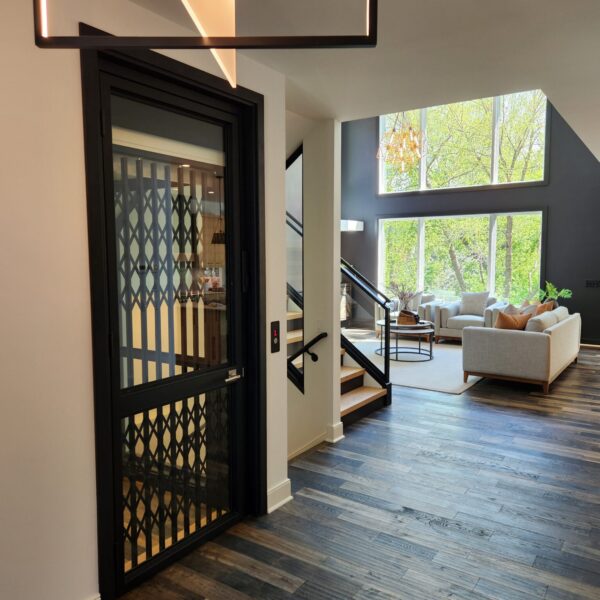
Bathe with Ease: How Accessible Bathtubs Can Redefine Bathroom Spaces at Home
October 22, 2024
Building Independence: Top 10 Features Every Handicap Accessible Home Should Have
November 12, 2024As remote work continues to grow, creating an accessible home office is not just a necessity but a powerful tool for fostering productivity and independence for all individuals, including those with mobility challenges or disabilities. A genuinely accessible office empowers everyone to perform their tasks comfortably and efficiently, instilling a sense of confidence and capability. Whether it’s for someone in a wheelchair, someone with limited mobility, or anyone needing specific accommodations, there are ways to make a workspace more inclusive. This guide covers key areas to consider in making a home office accessible, from layout and technology to furniture choices, ensuring everyone has a workspace that meets their unique needs.
-
Design an Open and Flexible Layout
A functional and accessible home office begins with a layout that promotes easy movement and flexibility. Ensuring adequate space for maneuvering is particularly important for individuals who use mobility aids, such as wheelchairs or walkers.
- Clear Pathways: Leave enough space for safe and easy access around the office, ideally at least 36 inches wide for pathways. This clearance allows users with mobility devices to navigate the office comfortably. Arrange furniture with space in mind, avoiding any unnecessary obstacles.
- Adjustable Workspaces: Flexibility in workspace layout is crucial for accessibility. Consider adjustable-height desks and tables, allowing users to work comfortably from sitting and standing positions. These desks can also accommodate wheelchairs, allowing users to set the height that works best for them.
- Doorways and Entryways: Wider doorways are essential for accessibility. If the home office is in a room with a standard doorway, you may need to install offset door hinges, which can add up to two inches of clearance without significant structural changes. Automatic door openers are also an option to facilitate access.
-
Choose Accessible and Ergonomic Furniture
Accessible furniture is central to a comfortable, functional workspace and ensures that everyone feels at ease and relaxed. Ergonomic furniture supports the body and can be adapted to meet the needs of individuals with different physical requirements, providing comfort and relaxation during work hours.
- Ergonomic Seating: Look for chairs with adjustable armrests, lumbar support, and height adjustments. The chair should provide back support to prevent fatigue and strain during long work hours. For individuals in wheelchairs, ensure the workspace provides enough space underneath for the wheelchair without compromising comfort or reachability.
- Desks with Adjustable Height: Desks that allow height adjustment are an excellent option for accessible workspaces. Adjustable desks can cater to people of varying heights and enable easy access for those using wheelchairs. Opt for models with easy-to-use controls, such as electric or crank adjustments, to make height changes effortless.
- Accessible Storage Solutions: Choose storage units that are low enough to be reached from a seated position. Accessible storage can include pull-out shelves, rolling carts, or cabinets with adjustable shelves that make it easy for everyone to organize and retrieve their materials. Lever-style handles on cabinets and drawers are easier to use than round knobs, particularly for individuals with limited dexterity.
-
Invest in Accessible Technology and Devices
Technology plays a critical role in creating an accessible home office. From assistive devices to user-friendly software, the right technology can transform a workspace into a highly efficient and accommodating environment, providing the necessary support and understanding for individuals with disabilities.
- Voice-Activated Assistants and Smart Controls: Voice-activated devices like Amazon Alexa, Google Assistant, or Apple’s Siri can help control lighting, adjust the thermostat, set reminders, and even handle minor office tasks without requiring physical input. These tools are invaluable for individuals with limited mobility or dexterity.
- Screen Readers and Magnification Tools: Screen readers (such as JAWS or NVDA) and screen magnification software can make digital tasks much more manageable for visually impaired individuals. Screen readers convert on-screen text into spoken words, while magnification tools increase text and image size for easier viewing.
- Speech-to-Text Software: For individuals with difficulty typing or using a mouse, speech-to-text software like Dragon NaturallySpeaking allows them to dictate their ideas and operate the computer using their voice. This hands-free technology promotes independence and makes computer-based work more accessible.
- Specialized Keyboards and Mice: Adaptive keyboards and mice are essential for individuals with limited hand dexterity. Options like trackball mice, joystick-style controllers, or one-handed keyboards cater to specific needs and allow users to navigate their computers comfortably.
-
Improve Lighting and Acoustics for Enhanced Accessibility
Good lighting and sound control contribute to a productive and accessible workspace. Poor lighting and excess noise can negatively affect concentration and increase fatigue, especially for individuals with sensory sensitivities or visual impairments. Creating a calming and soothing work environment can help reduce stress and improve focus. This can be achieved by using soft, non-intrusive colors, incorporating natural elements like plants, and minimizing clutter.
- Natural Lighting with Adjustable Controls: Ample natural light can boost focus and reduce eye strain. If possible, position the desk near a window and use blinds or shades to control sunlight levels. Install dimmable or adjustable LED lamps to accommodate varying lighting needs throughout the day. LED lights are especially beneficial for reducing glare and improving visibility for those with low vision.
- Task Lighting for Focus Areas: Use adjustable task lighting to illuminate work areas without casting shadows or creating glare on computer screens. Task lighting can be directed precisely where it’s needed, making it easier to read documents, take notes, or work on other detailed tasks.
- Soundproofing and Noise-Canceling Options: For individuals sensitive to noise or those who need a quiet workspace to concentrate, soundproofing can help create a more comfortable environment. Options include soundproof panels on the walls, noise-canceling headphones, or a white noise machine to mask background sounds.
-
Consider Accessibility in Office Organization and Layout
The way the office is organized and set up can make a huge difference in accessibility and usability. Minor adjustments to how supplies are stored and arranged can help create a more inclusive and user-friendly environment. It’s also important to consider individual preferences and interests when designing the office. Incorporating personal touches, such as favorite colors, artwork, or plants, can help create a more personalized and enjoyable workspace.
- Accessible Document and Supply Storage: Keep frequently used items within arm’s reach to reduce the need for reaching or bending. Install floating shelves, drawer organizers, or desktop storage units that allow easy access from a seated position. For individuals using wheelchairs, ensure items are stored no higher than eye level.
- Cable Management Solutions: Ensure that cables are organized and out of the way to prevent tripping or entanglement. Use cable management boxes, clips, or under-desk cable trays to keep wires neat and secure. Accessible cable management also improves the overall aesthetics and functionality of the workspace.
- Organize with Labels and Colors: For individuals with visual impairments, organizing items with large, easy-to-read labels or color-coded storage can make it easier to locate supplies quickly. Color-coded files, drawers, or shelves can be helpful for organizing documents, supplies, and equipment in an accessible way.
Creating an accessible home office is a worthwhile investment that ensures comfort, independence, and productivity for everyone, regardless of their physical abilities. By considering factors such as layout, furniture, technology, lighting, and organization, you can design a workspace that is inclusive and efficient. Whether adapting the office for personal use or preparing for a family member with specific needs, the proper modifications can make a significant difference. Accessibility is about creating a space that empowers individuals to work at their best, with dignity and ease, within an environment that respects and adapts to their needs.
CAPS Remodeling is dedicated to helping you design workspaces that cater to diverse needs, ensuring comfort and functionality for all users. By applying the practical tips outlined in this guide, you can transform your home office into a welcoming and efficient environment. Trust CAPS Remodeling to bring expertise and tailored solutions to create an accessible, productive space everyone can enjoy.

Introducing Jeff Cates, the visionary Founder and Owner of CAPS Remodeling. After experiencing a profound personal event involving his son in 2007, Jeff was inspired to serve a higher purpose: to create safer, more comfortable, and independent living conditions for the elderly and disabled by modifying their current homes. Jeff’s deep-seated religious beliefs form the moral compass that steers CAPS daily operations. Apart from his unwavering dedication to his work, Jeff finds joy in boating and cherishing moments with his family.




